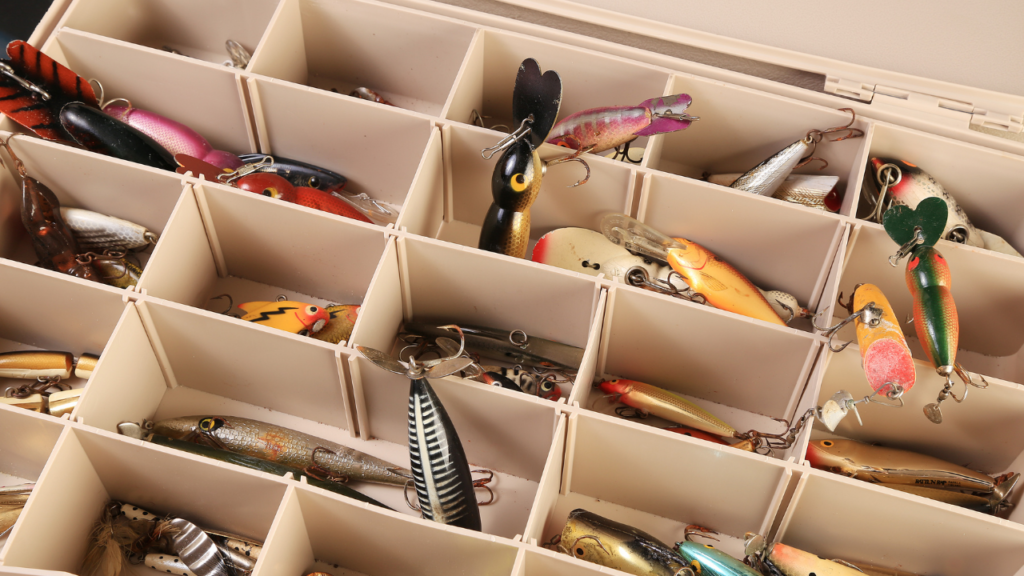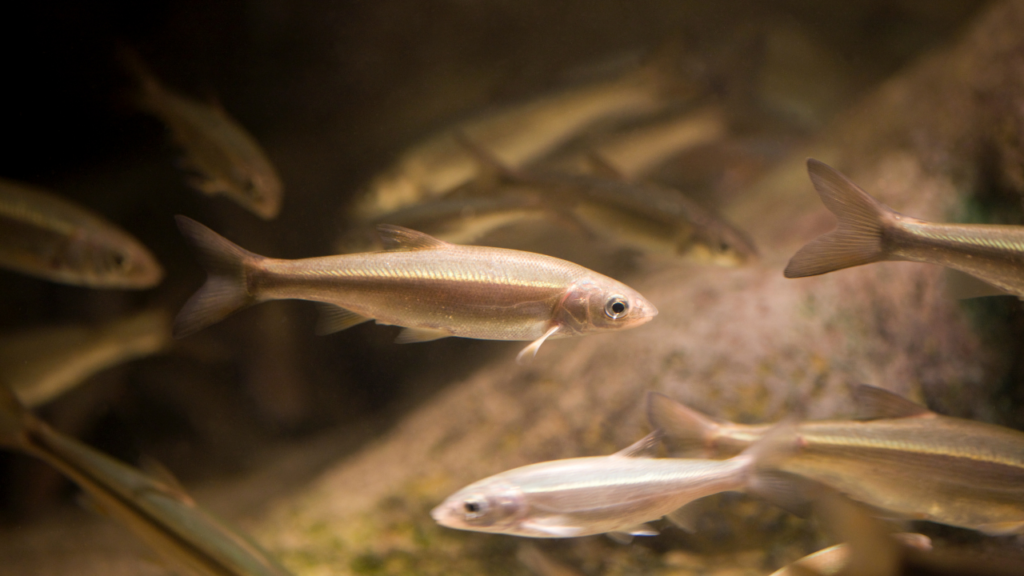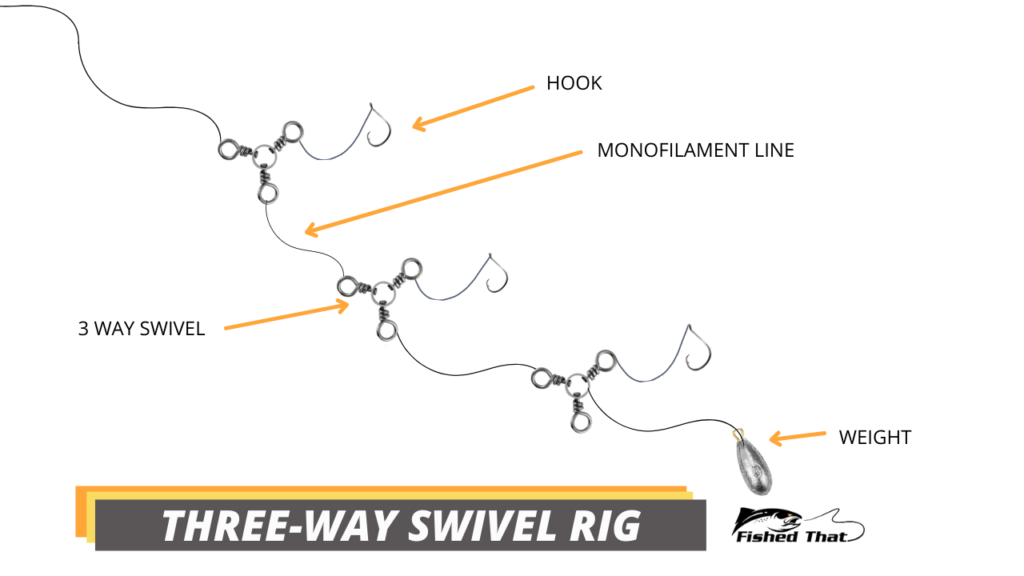Crappie fishing is a common activity for most anglers. However, catching crappies is not an easy task because of their size. Trolling for crappies is one of the most effective techniques to catch these elusive fish species. Whether you are a professional or beginner angler, here’s an ultimate guide you can refer to.
What Is Long Line Trolling for Crappie
Most anglers who fish crappies use long line trolling because it’s the best way to catch crappies faster. Long-line trolling, also known as the pull technique, involves securing reeds on a stationary road rack positioned at the back of the boat while pulling jigs at various depths.
When anglers use the trolling technique to catch cappies, it becomes easier to cover a lot of water. An advantage of long lining is that you can do it in almost any water. However, it’s crucial to perform this fishing technique around flat areas, main channels and ledges.
Crappie Trolling Rig Setup
When fishing crappies, you need to have the right rig set up and gear for the best results. Let’s take a closer look at what you need to pay attention to when setting up a crappie trolling rig
Terminal Tackle

A terminal tackle is broadly categorized into hooks, floats, sinkers, feeders, snaps, swivels, split rings, beads, blades, and jigheads. You can attach the terminal tackle by either clipping or tying it at the tip or end of the fishing line.
While there are different types of terminal tackles, the size usually depends on the target fish species. The best size when trolling for crappies is 1/32 to 1/4-ounce jig heads which adequately cover most scenarios. If you want to increase your chances of catching more fish, you should tie the jigs 3 or 4 feet apart.
Bait/Lure

Since crappies have a diverse diet, anglers can use different baits to capture them. However, the best and most effective lures for trolling crappies are live minnows because it is naturally part of their diet and small enough for them to swallow.
You can also use spinners, spider rigs, spoons, and crankbaits to attract the crappies. Spoons are metal objects that look like food for crappies, while crankbaits act as stationary bait when trolling at slow speeds. Spider rigs are also popular because they keep the line taut as you troll, reducing the chances of spooking the fish.
Pro Tip: When choosing the bait, you should also know the type of crappie bite to help you reel in at the right speed.
Rods and Reels

When trolling for crappies, you need a specific rod and reel. A trolling rod handles the weight of the fish and the resistance of the trolling line. On the other hand, the trolling reel is different from the standard reels because it has a larger spool, a depth counter, a multi-speed, and a stronger drag system.
- Ideal Rod Length: The best rod length during crappie fishing is 6ft to 16ft. This varies depending on personal preferences, water depth, and the time of the year.
- Rod Action: When fishing lightweight species like crappies, light action rods are the most ideal. This rod action is usually defined by how easily and far the tip will bend. Keep in mind that light action rods are paired with smaller hooks because they have less resistance.
- Type of Reel: During crappie trolling, anglers need to check the durability, drag, and strength when choosing the reel. The spinning reel is the best choice when trolling because it has a smooth drag, it’s also easy to adjust, and the line is consistent. It’s also functional and affordable.
Fishing Line
The type of line you use during trolling for crappies is very important. You need to get a heavy-duty line that’s strong enough to handle water resistance and the weight of the fish. Ideally, you can use monofilament or the braided line.
Monofilament lines, which have a higher demand globally, are easy to cast, more affordable, abrasion-resistant, and have more color options. On the other hand, braided lines have low visibility options and are more expensive.
While either line works, your choice will rely heavily on the water clarity and the fishing technique.
Rod Holders/Racks

Rod racks or holders are essential during trolling because they hold the rods horizontally, making it easier for anglers to adjust each rod. Most rod racks usually have 4 rods, but you can use two racks at the front of the boat. Anglers can hold on to them as the trolling motor pulls the bait into the water.
Hooks
Generally, crappies have larger mouths than their size; therefore, you’ll need to go for hooks that are light-wire and sharp. The best hook sizes are #2, #4, and #6; however, you can go beyond this range if you are using tiny or larger minnows.
Additionally, thin hooks are preferable because they bend more easily, making them harder for crappies to see. The Aberdeen hook style is the most common and the top choice because it has all these traits.
Crappie Trolling Rigs
A rig could determine whether you catch fish or not. Factors such as water temperature, water color, and the lake habitat significantly influence the effectiveness of your trolling rigs. Therefore, you need to choose the proper rig, know how to set it up and, use it, and apply the recommended trolling speed.
Let’s take a closer look at the different crappie trolling rigs.
Spider Rig
The spider rigging method involves adding a dropper line to the main fishing line and using two rods with lures at the end.
How to Set It Up
The most common setup for this rig involves putting multiple poles in rod racks. Most anglers add two minnows or two jigs on the hooks tied at different lengths. You’ll need a 16-ounce jig, making it easier for the line to hold.
When to Use It
If you adjust the speed, baits, and depth, you can use spider rigging to catch crappies all year round. During early winter, crappies are feeding and stay in large schools in the middle water column, making it easier for anglers to spot them. You can also easily catch them during summer, fall, and spring.
Trolling Speed
Anglers need to maintain low speeds when using spider rigs; the ideal speed is 0.3 mph.
Umbrella Rig

An umbrella rig is suitable for you if you want to have multiple baits and several jigs in the same spot but without using more rods.
How to Set It Up
You’ll need to join several steel wires to a single jig head. Each steel wire will need to have a swivel at the end. You can then attach the bait of choice to the rig.
When to Use It
Based on its design, the umbrella rig simultaneously gets as many multiple baits in the water. You can use this rig when trolling in deeper water during summer when crappies swim deeper for cooler waters.
Trolling Speed
The speed should be slow when trolling crappies with this rig, about 0.5 to 0.9 mph.
Dropper Rig
Dropper rigs are usually dropped down in the water column to capture crappies. Typically, the bait gets suspended by a weight at the bottom. They come in three categories, fixed float, tandem dropper, and slip float rigs.
How to Set Up
To capture the crappies, attach a sinker to the end of the mainline. You’ll need to have 1 to 4 dropper lines, approximately 1 ft long and spaced 1 ft apart. The sinker should be about 16 ounces. When attaching the dropper lines, use a swivel or a loop knot and add baits of various colors.
When to Use It
You can use a dropper rig anywhere on the water. While the flat areas are ideal for fishing all year round, the ledges become suitable when the crappies start moving to shallow areas during spawning season.
Trolling Speed
The ideal speed should be about 0.8mph
Three-Way Swivel Rig

This rig is the best choice when trolling for crappie, and you don’t know the exact depth of the water body. It allows crappie anglers to have multiple options simultaneously and increases the chances of bites.
How to Set Up
Tie the main fishing line to a three-way swivel. Cut 2 to 3 18 inches line pieces and add swivels at the end of each line. At the end, you can add hooks that will stay in different water depths as you troll for crappies.
When to Use It
The three-way swivel rig is ideal during summer when the temperatures increase. It helps the angler figure out what the crappies are biting.
Trolling Speed
For this rig, the speed should be about 0.4 to 0.8 mph.
Trolling for Crappie Comparison Table
Trolling for Crappie in Summer
When trolling for crappie in summer, the post-spawn crappies will be in their bedding areas; therefore, the recommended depth is 12 to 18 ft deep during summer. Additionally, the fish stay suspended during this season; hence, you should use slow-strolling small crankbaits to cover more water.
Troll at speeds of 1.5 to 2.5 mph in a slow S pattern as you wait for the crappies to take a bite. When the temperatures are high, you can get the crappies in offshore humps, where they move to feed on baitfish.
Trolling for Crappie at Night
Crappies are more active at night, so it’s an ideal time for trolling. When the water is clear, the crappies are 20 to 30 ft deep, 10 to 20 ft deep in stained water, and 5 to 10 ft in muddy water. Therefore, you need to know everything about the water body before trolling for crappies at night.
You can use minnows or jigs as baits for crappies at night. The recommended trolling speed is about 0.7 mph.
Trolling for Crappie in the Fall
When trolling for crappies in the fall, you need to keep in mind that they move back to their schools in the deeper waters. You are likely to find them 20 to 30 ft deep in their schools. You can use crankbaits since crappies are predators and always looking for food.
The ideal speed during the fall is 0.8 to 1.3 mph to ensure that you capture the crappies at the right time as soon as they take the bite.
Trolling for Crappies FAQ
Where Are Crappies Found
Crappies’ original habitat was in the U.S. and Canada, but they are now present in other countries. Crappies, especially the adult ones, are found in reservoirs, ponds, freshwater lakes, streams, and backwaters. They prefer areas with cover and wood such as brush piles, tree branches, stumps, fallen trees, vegetation, or boulders. Additionally, they stay in large groups.
What Depth Do You Troll for Crappie
On most occasions, crappies stay in shallow waters; therefore, you can troll 2 to 8 ft deep. However, during seasons when they move to deeper waters, anglers have to troll for 10 to 30 ft, depending on the location and water depth.
What Time of Day Is Best for Crappie Trolling
The ideal time to troll for crappies is nighttime or in the morning, just before 10 AM before it becomes hotter. The crappies tend to move in deeper waters and have a slower bite when the temperatures are high.
Final Thoughts on How to Troll for Crappies
Trolling for crappies makes it easier to catch these fish. Thanks to the different techniques, anglers can use trolling all year round. You just need to understand the various tactics and conditions for each season.








